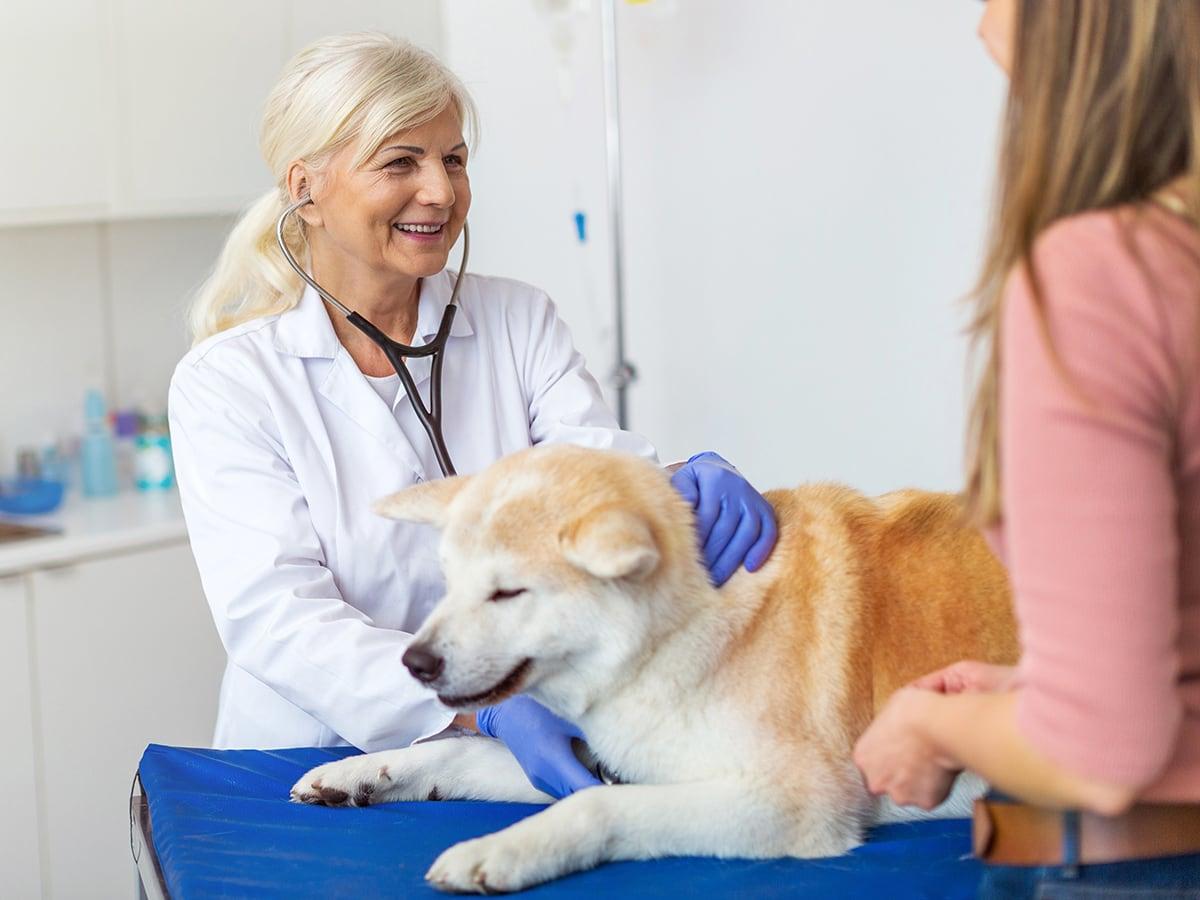66% of the households in the US own a pet. 75% of them are dog parents.1 According to the APPA, Americans spent $147 billion on their pets in 2023, up from $136.8 billion in 2021. It’s estimated that $150.6 billion will be spent in 2025.2 But where are these pet parents spending all the money?
A survey found that on average pet parents spent $633 on food and $645 on treats. They spent another $585 approximately on toys and $600 on clothes. Some of these numbers may seem high as the survey was conducted among 2000 pet parents,3 but the total expenditure would be in the same range, more or less, as some of you may have spent on vacations, walkers, etc.
One expense that most of the pet parents shared was vet bills. The survey showed the average expenditure on vet bills as $1,242 for the year.3
Vet bills form the majority of expenses for most of the dog parents. Let us understand the break-up of vet bills and how you can try to plan for them better.
How Much Do Vet Bills Cost for a Dog?
You’ll likely have to take your dog to a vet for various reasons. These can include –
Routine checkup – For overall wellness and treating any ongoing conditions
Vaccinations – As per the recommended schedule
Unexpected Medical condition – If you see any symptoms like vomiting, diarrhea, lethargy, excessive drooling, etc.
Emergencies – If your pup gets into a fight, or accident, eats something it’s not supposed to, or has a seizure, etc.
Special visits – For procedures like spaying or neutering, foreign object removal, dental extraction, ongoing therapy like aqua therapy, etc.
Your vet bill will typically depend on why you’re taking your dog to the vet. Your location, type of facility, and dog breed may also be other factors affecting your vet bill.
Here are the average vet bills for each of the above scenarios2 –
Routine check-up - $25 - $186
Vaccination - $20 - $60 per dose6
Emergencies - $150 - $250 for the initial exam, and $1,600 - $10,000 if your pet’s treatment involves surgery7
Medical conditions - $100 - $5006 (for ear infections, allergies, diarrhea, UTIs, diabetes, and more)
Special Visits - $160 - $220 for spaying/neutering6, $700 for treatment of dental disease6
How Much are Dog Vet Bills?
As mentioned above, the average vet bill for your dog could be in the range of $500 - $1500 per year depending on a variety of factors. If we assume that your dog may not need any additional services like surgery or therapies, here are the expected vet expenses that could occur.
Routine vet visit - ≈$1006 (Adult dogs should have a complete veterinary examination at least once a year. Puppies need veterinary visits usually every 3 to 4 weeks until they are about 4 months old)
Vaccinations - ≈$250 annually for the core vaccines like Bordetella, Influenza, Rabies, DHPP, etc.9
Preventive measures - ≈$40 per month for procedures like flea and tick prevention, and heartworm prevention.6
Spaying / Neutering - ≈$200 one-time cost6
Microchipping - ≈$45 one-time cost8
These are typically going to be your vet expenses given your dog doesn’t need any additional medication for unexpected illnesses or injuries. If it does, a complete treatment for your dog’s medical condition may require medication, prescription diets, follow-up visits, etc. You can get up to 90% cash back on your eligible vet bills with pet health insurance. More about it below.
Breeds Prone to Higher Vet Bills
Some medical conditions are more likely to affect some breeds than others due to their genetics.4 Some examples are –
English Bulldogs - Due to their brachycephalic (short-nosed) facial structure, they are prone to breathing issues, overheating, and dental problems.
German Shepherds – They are prone to hip dysplasia, arthritis and other mobility issues. These medical conditions are usually expensive to treat.
Great Danes – These gentle giants are prone to bloating, gastric issues, heart issues like cardiomyopathy and joint problems like hip dysplasia.
Saint Bernard – These rescue experts are prone to eye problems like entropion, joint issues like hip dysplasia and heart diseases.
Golden Retrievers – One of the most popular, friendly and affectionate dogs are prone to certain skin conditions, hip/elbow dysplasia, and heart diseases.
While these are only some examples, many dog breeds may be prone to one or the other medical conditions that can affect them anytime in their lifespan. Big breeds are generally prone to bone problems while small breeds may be more prone to gastric and respiratory problems. Pet insurance can help here! Details are below.
How Much is a Vet Bill for a Broken Leg?
A broken leg may not be life-threatening for your dog, but its treatment can put a dent in your savings. It can be caused by various reasons like a road accident or a fall from height. All incidents may not require surgery. For minor cases like a hairline fracture on the bone, a splint or a cast may do the job and the overall cost including medications may not exceed $1000.5 But in case surgery is required, the vet bill may be around $2000 or more depending on the severity.5
How Can Pet Insurance Help?
Having pet health insurance with a Spot plan can help you get up to 90% cash back of the eligible vet bills ranging from accidental injuries to complicated surgeries. Some providers also offer preventive care add-ons that can help cover eligible costs of routine vet services like heartworm and flea prevention, and vaccinations as well. At Spot Pet, we know that a pet can face multiple medical conditions over their lives which can include behavioral ones like anxiety. Our plans can help cover the eligible costs of these conditions, including alternate therapies and microchip implantation.
Our plans can help pet parents manage the eligible costs of covered veterinary care and help ensure that their pets can receive the best treatment possible. Here are some ways that Spot pet insurance plans can help:
Covers Unexpected Veterinary Costs:
Spot pet insurance plans can cover the eligible costs of unexpected veterinary treatments, such as emergency surgeries, X-rays, and prescription medications for covered conditions.
Customizable Plans:
Choose your annual limit, reimbursement rate, and deductible from a range of options, and create the plan that will fit the needs of your pet and your budget.
Peace of Mind:
With Spot pet insurance plans, pet parents can know that they can provide the best care for their pet with less worry about the cost.
Our preventive care add-ons can help cover the eligible cost of spaying and neutering, dental cleaning, vaccinations, and other routine care services for your dog, for an additional cost.
Take your step towards better financial planning for your four-legged buddy today.
Get a quote today!

I've had the privilege of immersing myself in the realm of pet safety. As the owner of an energetic mini golden doodle, I know just how stressful being a pet owner can be. I am dedicated to ensuring our beloved pets enjoy a life brimming with good health.
“Pet Ownership Statistics and Facts – 2024,” MarketWatch, https://www.marketwatch.com/guides/pet-insurance/pet-ownership-statistics/, May 8, 2024.
“Industry Trends and Stats,” American Pet Products Association, https://www.americanpetproducts.org/research-insights/industry-trends-and-stats, n.d.
“Here’s how much pet parents spend...” NY Post, https://nypost.com/2023/12/12/lifestyle/heres-how-much-pet-parents-spend-yearly-on-their-furry-friends-poll/, Dec. 12, 2023.
“12 Dog Breeds With the Biggest Vet Bills,” iHeartDogs, https://iheartdogs.com/dog-breeds-with-the-biggest-vet-bills/, Feb. 6, 2024.
“How Much Does Broken Leg Surgery Cost? 2024 Update,” Dogster, https://www.dogster.com/dog-health-care/how-much-does-dog-broken-leg-surgery, May 17, 2024.
“How Much Does a Vet Visit Cost?,” Care Credit, https://www.carecredit.com/vetmed/costs/, 2023.
“Emergency Vet Visit Costs and Financing Options,” Care Credit, https://www.carecredit.com/well-u/pet-care/emergency-vet-visit-cost-and-veterinary-financing/, Dec. 13, 2022.
“How Much Does It Cost to Microchip a Dog,” Market Watch, https://www.marketwatch.com/guides/pet-insurance/how-much-does-it-cost-microchip-a-dog/, May 3, 2024.
“Dog Vaccinations Cost: What Shots to Expect and How to Budget Accordingly,” Daily Paws, https://www.dailypaws.com/living-with-pets/pet-costs/dog-vaccinations-cost#toc-how-much-do-dog-vaccinations-cost, May 13, 2024.












